Even and odd functions have symmetry in their graphs (about the y-axis or the origin). However, we can also tell what type of function we will get by adding or multiplying two or more of them together.
So, what do you need to know about sums & products of even & odd functions? The sum or product of two even functions is even. The product of two odd functions is also even. The sum of two odd functions is odd. The product of an even and an odd function is also odd. The sum of an even function and an odd function is neither even nor odd, unless one or both are zero.
Of course, we can add as many even functions as we like and still get an even function. Likewise, we can add as many odd functions as we like and still get an odd function.
In this article, we’ll take a closer look at sums and products of both even and odd functions. We’ll also look at some examples to make the concepts clear.
Let’s get started.
Sums & Products Of Even & Odd Functions
Remember that even and odd functions have the following key characteristics:
- For an even function f(x): f(-x) = f(x) for all x in the domain.
- For an odd function f(x): f(-x) = -f(x) for all x in the domain.
The table below summarizes what to expect when adding or multiplying even and odd functions.
| f(x) | g(x) | Sum (f+g) | Product (f*g) |
|---|---|---|---|
| Even | Even | Even | Even |
| Even | Odd | Neither | Odd |
| Odd | Odd | Odd | Even |
when adding or multiplying
even and odd functions.
Let’s start with the sum of two even functions.
Sum Of Two Even Functions
The sum of two even functions will always be even. To prove this, assume f(x) and g(x) are even functions.
Then f(-x) = f(x) and g(-x) = g(x). Looking at their sum:
- (f + g)(-x)
- =f(-x) + g(-x) [by definition of a sum of functions]
- =f(x) + g(x) [since f(x) and g(x) are both even functions]
- =(f + g)(x) [by definition of a sum of functions]
So (f + g)(-x) = (f + g)(x), which means that the sum of f(x) and g(x) is even.
Note that the difference of two even functions is also even, since it is really a sum of two even functions (changing the sign of an even function means it is still even).
Note that we can add any number of even functions and the sum will be even (we can prove this by looking at a group of 2 functions at a time).
Example: Sum Of Two Even Functions
Let f(x) = x2 + 1 and g(x) = x4 + 3.
Both f(x) and g(x) are even functions, since they are polynomials whose terms have even powers of x.
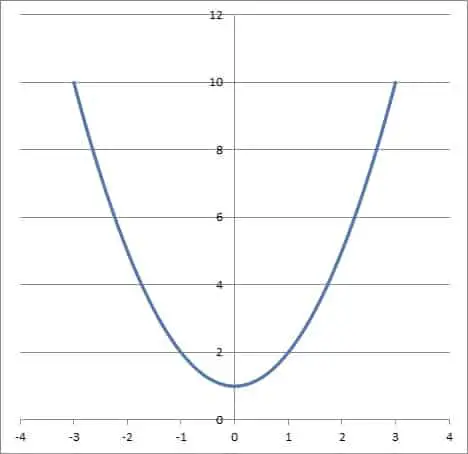
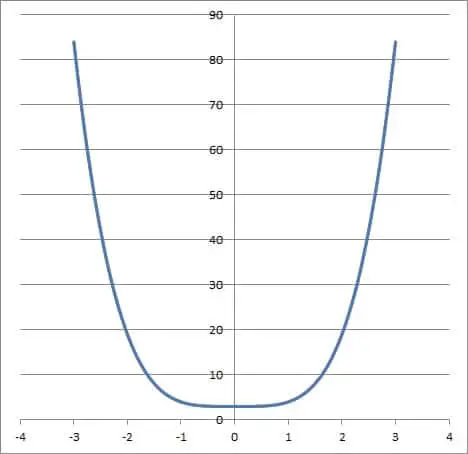
Their sum is:
- f(x) + g(x)
- =(x2 + 1) + (x4 + 3) [definition of f(x) and g(x)]
- =x4 + x2 + 4 [rearrange and combine like terms]
This is also an even function, since it is a polynomial whose terms have even powers of x.
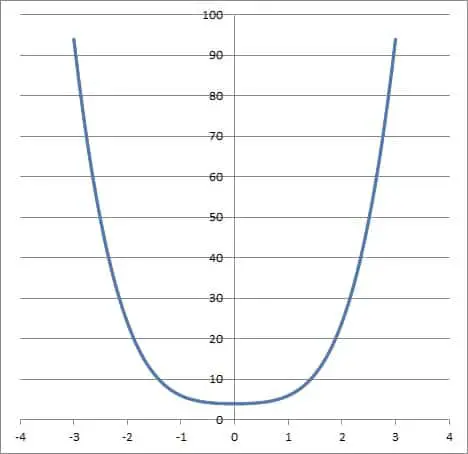
Sum Of Two Odd Functions
The sum of two odd functions will always be odd. To prove this, assume f(x) and g(x) are odd functions.
Then f(-x) = -f(x) and g(-x) = -g(x). Looking at their sum:
- (f + g)(-x)
- =f(-x) + g(-x) [by definition of a sum of functions]
- =-f(x) + -g(x) [since f(x) and g(x) are both odd functions]
- =-(f + g)(x) [by definition of a sum of functions]
So (f + g)(-x) = -(f + g)(x), which means that the sum of f(x) and g(x) is odd.
Note that the difference of two odd functions is also odd, since it is really a sum of two odd functions (changing the sign of an odd function means it is still odd).
Note that we can add any number of odd functions and the sum will be odd (we can prove this by looking at a group of 2 functions at a time).
Example: Sum Of Two Odd Functions
Let f(x) = x3 + 2x and g(x) = x7 + 4x5.
Both f(x) and g(x) are odd functions, since they are polynomials whose terms have odd powers of x.
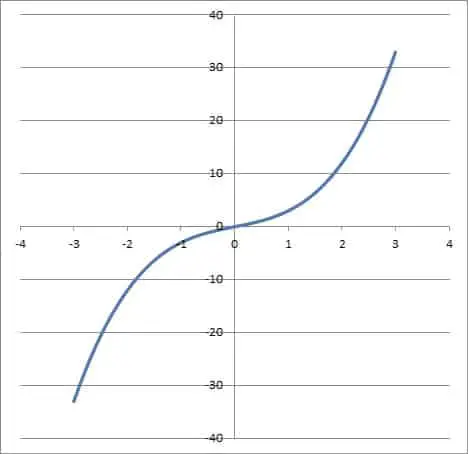
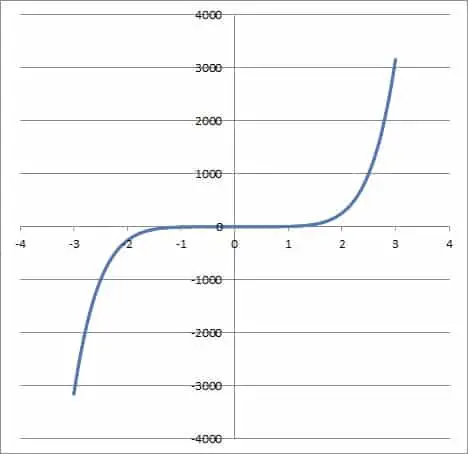
Their sum is:
- f(x) + g(x)
- =(x3 + 2x) + (x7 + 4x5) [definition of f(x) and g(x)]
- =x7 + 4x5 + x3 + 2x [rearrange terms]
This is also an odd function, since it is a polynomial whose terms have odd powers of x.
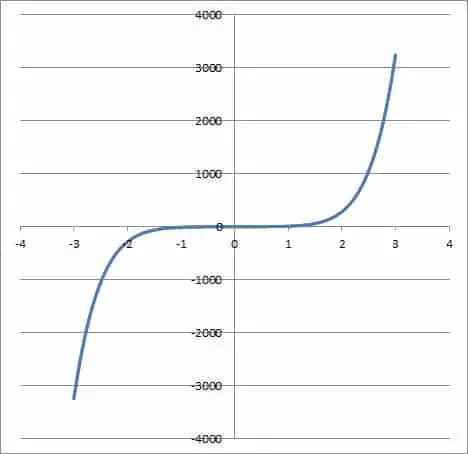
Sum Of An Even & An Odd Function
The sum of an even and an odd function is neither even nor odd, unless one or both functions is equal to zero (zero is both even and odd).
To prove this, assume f(x) is an even function, and g(x) is an odd function.
Then f(-x) = f(x) and g(-x) = -g(x). Looking at their sum:
- (f + g)(-x)
- =f(-x) + g(-x) [by definition of a sum of functions]
- =f(x) + -g(x) [since f(x) is an even function and g(x) is an odd function]
- =f(x) – g(x)
Now, looking at (f + g)(x):
- (f + g)(x)
- =f(x) + g(x) [by definition of a sum of functions]
This is not the same as (f + g)(-x), unless g(x) = 0. So, (f + g)(x) is not even.
Looking at –(f + g)(x):
- -(f + g)(x)
- =-f(x) – g(x) [by definition of a sum of functions]
This is not the same as (f + g)(-x), unless f(x) = 0. So, (f + g)(x) is not odd.
Thus, (f + g)(x) is neither even nor odd, unless:
- If f(x) = 0, then (f + g)(x) is odd.
- If g(x) = 0, then (f + g)(x) is even.
- If f(x) = 0 and g(x) = 0, then (f + g)(x) is both even and odd (since the sum is zero).
Example: Sum Of An Even & An Odd Function
Let f(x) = x2 + 3 and g(x) = x3 – 4x.
Then f(x) is an even function (it is a polynomial with even exponents) and g(x) is odd function (it is a polynomial with odd exponents).
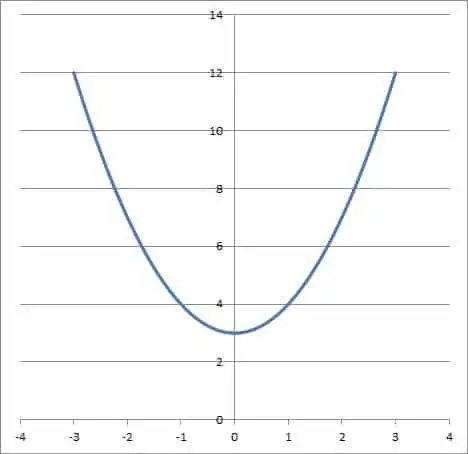
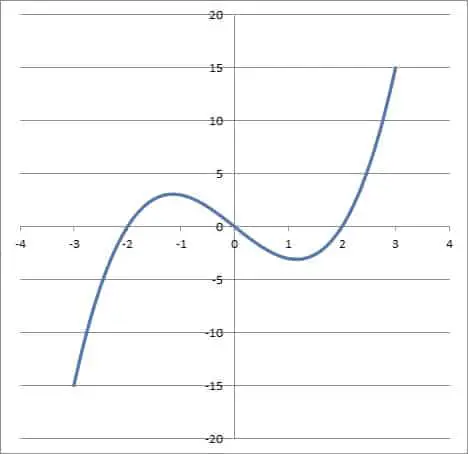
Their sum is:
- f(x) + g(x)
- =(x2 + 3) + (x3 – 4x) [definition of f(x) and g(x)]
- =x3 + x2 – 4x + 3 [rearrange terms]
This function is neither even nor odd, since it is a polynomial with both even and odd exponents.

Product Of Two Even Functions
The product of two even functions will always be even. To prove this, assume f(x) and g(x) are even functions.
Then f(-x) = f(x) and g(-x) = g(x). Looking at their product:
- (f*g)(-x)
- =f(-x)*g(-x) [by definition of a product of functions]
- =f(x)*g(x) [since f(x) and g(x) are both even functions]
- =(f*g)(x) [by definition of a sum of functions]
So (f*g)(-x) = (f*g)(x), which means that the product of f(x) and g(x) is even.
Note that the quotient of two even functions is also even, since it is really a product of two even functions (taking the reciprocal of an even function still leaves us with an even function). The only thing to look out for is zero denominators!
Note that we can multiply any number of even functions and the product will be even (we can prove this by looking at a group of 2 functions at a time).
Example: Product Of Two Even Functions
Let f(x) = 3x2 + 5 and g(x) = x4 – 2.
Both f(x) and g(x) are even functions, since they are polynomials whose terms have even powers of x.
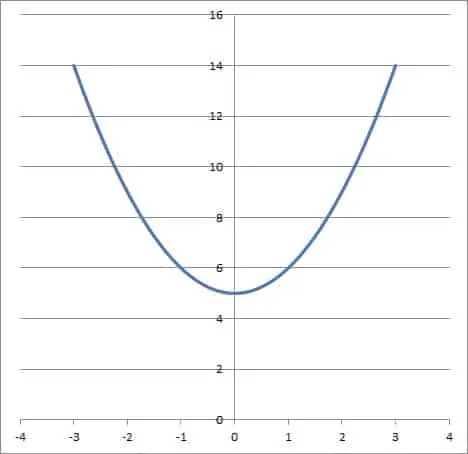
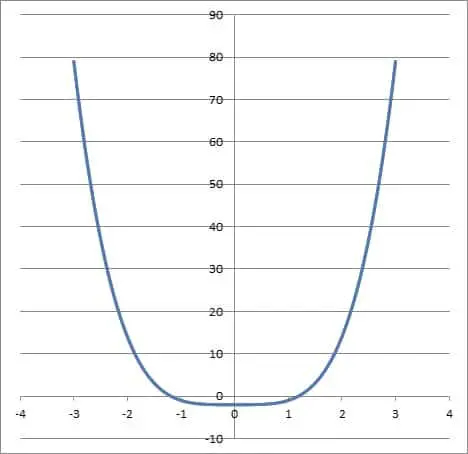
Their product is:
- f(x)*g(x)
- =(3x2 + 5)*(x4 – 2) [definition of f(x) and g(x)]
- =3x6 – 6x2 + 5x4 – 10 [FOIL]
- =3x6 + 5x4 – 6x2 – 10 [rearrange terms]
This is also an even function, since it is a polynomial whose terms have even powers of x.
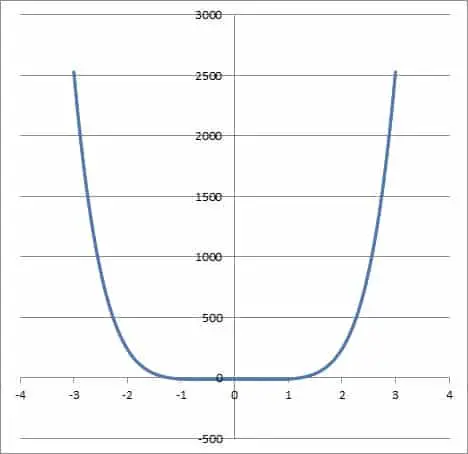
Product Of Two Odd Functions
The product of two odd functions will always be even. To prove this, assume f(x) and g(x) are odd functions.
Then f(-x) = -f(x) and g(-x) = -g(x). Looking at their product:
- (f*g)(-x)
- =f(-x)*g(-x) [by definition of a product of functions]
- =-f(x)*-g(x) [since f(x) and g(x) are both odd functions]
- =f(x)*g(x) [product of two negatives is positive]
- =(f*g)(x) [by definition of a sum of functions]
So (f*g)(-x) = (f*g)(x), which means that the product of f(x) and g(x) is even.
Note that the quotient of two odd functions is also odd, since it is really a product of two odd functions (taking the reciprocal of an odd function means it is still odd).
Note that if we multiply more than 2 odd functions, there are 2 cases to consider:
- For the product of an even number of odd functions, the product is even.
- For the product of an odd number of odd functions, the product is odd.
Example: Product Of Two Odd Functions
Let f(x) = 4x5 – 8x and g(x) = 5x3 + x.
Both f(x) and g(x) are odd functions, since they are polynomials whose terms have odd powers of x.
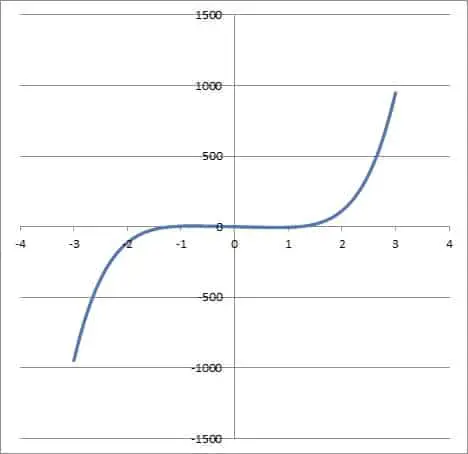
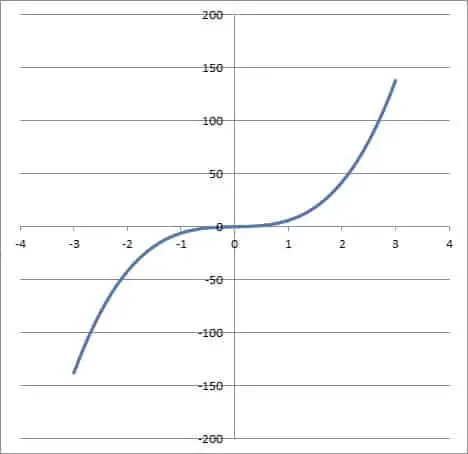
Their product is:
- f(x)*g(x)
- =(4x5 – 8x) + (5x3 + x) [definition of f(x) and g(x)]
- =20x8 + 4x6 – 40x4 – 8x2 [FOIL]
This is an even function, since it is a polynomial whose terms have even powers of x.
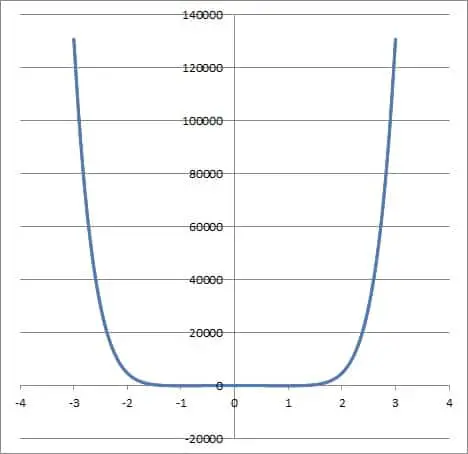
Product Of An Even & An Odd Function
The product of an even and an odd function is an odd function, unless either function is zero, in which case the product is zero (which is both even and odd).
To prove this, assume f(x) is an even function, and g(x) is an odd function.
Then f(-x) = f(x) and g(-x) = -g(x). Looking at their product:
- (f*g)(-x)
- =f(-x)*g(-x) [by definition of a product of functions]
- =f(x)*-g(x) [since f(x) is an even function and g(x) is an odd function]
- =-f(x)*g(x)
- =-(f*g)(x)
Since (f*g)(-x) = -(f*g)(x), we know that (f*g)(x) is an odd function.
Example: Product Of An Even & An Odd Function
Let f(x) = x4 – 5 and g(x) = x5 + 2x.
Then f(x) is an even function (it is a polynomial with even exponents) and g(x) is odd function (it is a polynomial with odd exponents).
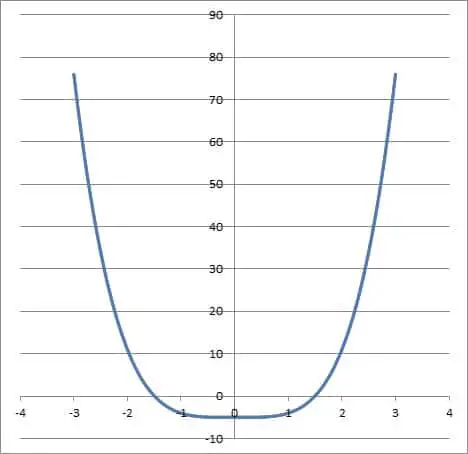
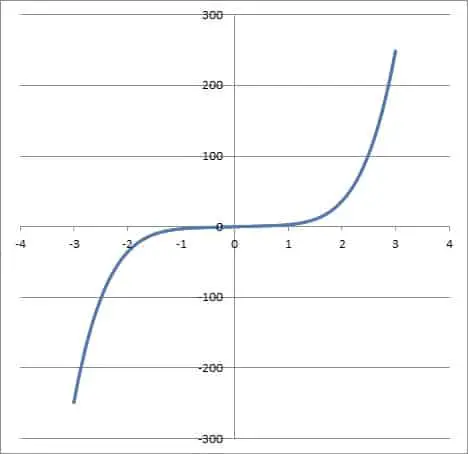
Their product is:
- f(x)*g(x)
- =(x4 – 5)*(x5 + 2x) [definition of f(x) and g(x)]
- =x9 + 2x5 – 5x5 – 10x [FOIL]
- =x9 – 3x5 – 10x [combine like terms]
This function is odd, since it is a polynomial with odd exponents.

Conclusion
Now you know the cases for sums and products of even and odd functions, along with the special cases (when one or both functions is zero).
I hope you found this article helpful. If so, please share it with someone who can use the information.
Don’t forget to subscribe to my YouTube channel & get updates on new math videos!
~Jonathon


